There’s a stretch of Florida’s Big Bend where summer is quiet, natural, and unhurried—so you can actually enjoy it the way it’s meant to be. Not boardwalks or jam-packed beaches—but wild, seagrass-rich shallows, cold spring-fed rivers, and days that begin with the tide and end with a skillet of scallops.
That’s what draws thousands of families, locals, and traveling die-hards to the scalloping grounds near Steinhatchee every year. And for those willing to branch just slightly off the main route—away from the crowd—you’ll find one of the most quietly productive zones in the region: the Econfina River. Here, scalloping season still means waking up early, putting in a half-day on the water, and snorkeling across wide-open scallop beds so thick you can limit out before lunch.
Let’s break down everything you need to know to make the most of the Steinhatchee scalloping season 2025—from when to go and what to expect, to why the Econfina River might quietly become your favorite spot on the Gulf.
Table of Contents
Toggle2025 Scallop Season Dates for the Steinhatchee Area
The 2025 scalloping season in Steinhatchee typically follows Florida Fish and Wildlife Conservation Commission (FWC) guidelines, which for this region historically means mid-June to early September. While final season dates are usually announced early in the year, the most active period—where visibility, tide cycles, and scallop populations line up best—falls between July and early August.
Florida’s bay scallop season is managed by zones, and Steinhatchee and the Econfina River fall within the Fenholloway–Suwannee River Zone. According to official 2025 FWC releases:
- The season opens on June 15 and runs through Labor Day (September 1)
- For these first two weeks (June 15–30), there is a lower bag limit: 1 gallon of whole scallops per person (or 1 cup shucked), with a vessel cap of 5 gallons or 2 pints
- From July 1 through Labor Day, the standard daily bag limit applies: 2 gallons of whole scallops per person, or 1 pint of shucked meat, and 10 gallons per vessel (or ½ gallon shucked)
These dates align with the historical pattern for this zone—opening June 15 and closing on or around Labor Day. The period of maximum scallop productivity and better visibility typically centers around mid‑July to early August, making it the peak window within the longer legal season.
What This Means for Planning
- Planning by Season Dates: If you’re organizing a scalloping trip near Steinhatchee or Econfina, know that anytime between mid‑June and September 1 is technically open. But…
- Peak Time: Mid‑July to early August offers the best combination of scallop size and density.
- Bag Limits Transition: Early in the season (June 15–30), limits are reduced—so expect smaller daily take if you’re early. By July onward, the full limits are restored.
If you’re planning your trip around scalloping season 2025 dates, be sure to verify with FWC for the finalized window. But rest assured, peak season often spans the heart of summer, when the Gulf is warm, clear, and calm—and the scallops are ready for the picking.
Why the Econfina River Outshines the Crowds
Just down the coast from Steinhatchee proper, the Econfina River gives you a quieter but no less productive option for Steinhatchee scalloping charters and tours. If you’re picturing the madness of parking lot boat ramps, shoulder-to-shoulder scallopers, and every inch of the grass beds picked over by 10 a.m., this isn’t that.
The Econfina system feeds into a less-developed bay zone, where scallops tend to cluster in shallow, grassy areas that are relatively easy to access—especially with the help of a local captain. Since it’s not a town built around scalloping tourism, you won’t find crowds like you do in Keaton Beach, Crystal River, or Homosassa. That’s exactly what makes it worth considering.
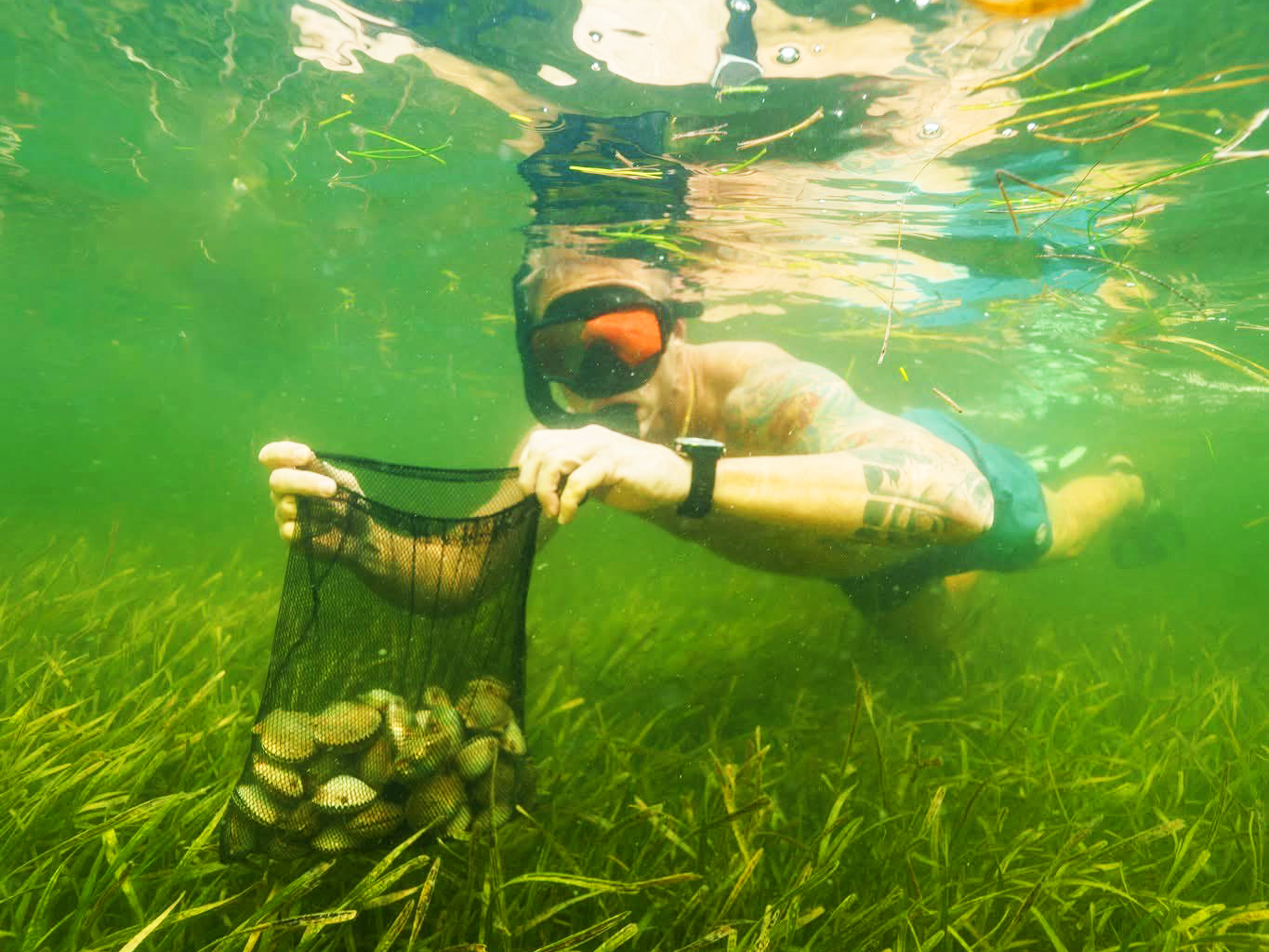
And for scallopers looking to cover ground fast and efficiently, half-day charters on the Econfina are the perfect blend of adventure and ease. You’re on the water for the best tide and visibility windows, you still have the afternoon to relax, and you often hit your limit before the Gulf heat sets in!
Steinhatchee Scalloping Grounds: Where Do the Scallops Hide?
The Steinhatchee scallop grounds, including those off the Econfina River, are mostly found in 4–7 feet of water over dense seagrass beds. These scallops aren’t buried in the sand like clams—they sit right on top of the grass, blending in with their mottled brown shells until you spot their bright blue eyes and signature flinch as they snap shut.
In this part of the Big Bend, the bottom terrain is a mix of turtle grass, sandy patches, and eelgrass. The healthiest scalloping grounds tend to be those where saltwater clarity is high and grass isn’t choked with silt. That’s why knowing the 2025 scalloping report—including factors like water clarity, recent rains, and tides—can make a big difference.
Unlike static fishing spots, scallop beds shift with the seasons, and a bed that was hot last year might be barren now. Which is why going with a captain who’s out scouting beds daily gives you a huge edge.
What to Expect on a Scalloping Charter
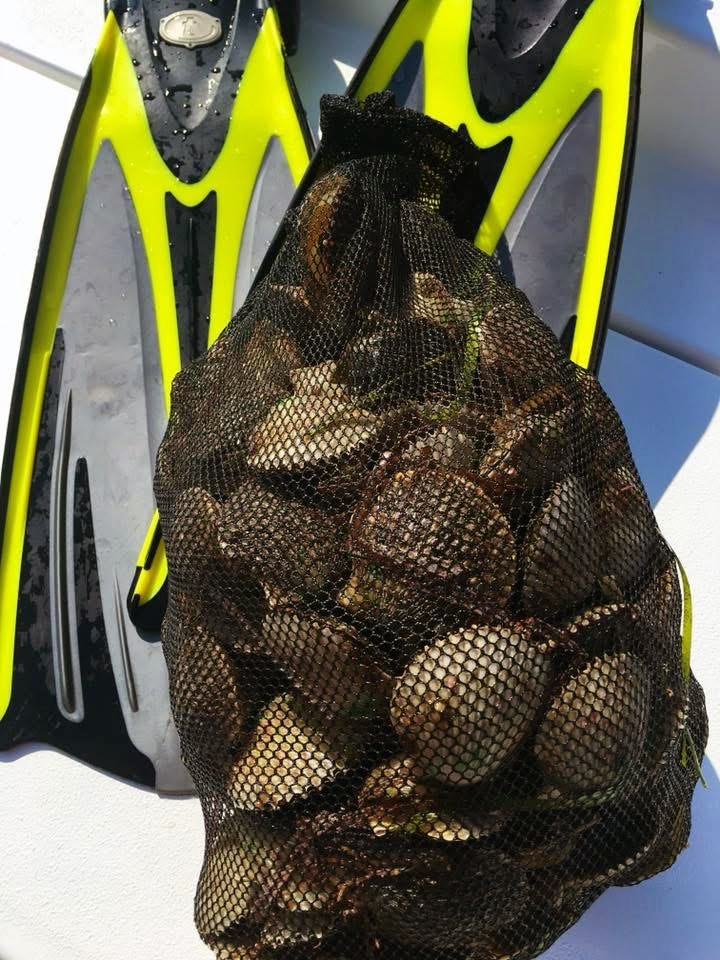
If you’ve never gone before, here’s the setup: you hop on a shallow-draft boat, ride out a few miles into the Gulf until the water turns that perfect tropical green, throw anchor, and slip overboard with mask, snorkel, and mesh bag in hand.
Half-day scalloping tours in the Econfina area usually last around 4 hours, with several stops depending on scallop density. You’ll be swimming, snorkeling, and diving down to grab scallops by hand. No tanks, no spears—just your eyes and a quick reach.
The best charters supply everything: snorkeling gear, licenses, bags, and usually a cooler for your catch. Some even clean the scallops for you afterward, but part of the fun is learning how to do it yourself—especially with a cold drink and some shade once you’re back on land.
How to Maximize Your Scallop Haul Without Wasting Time or Energy
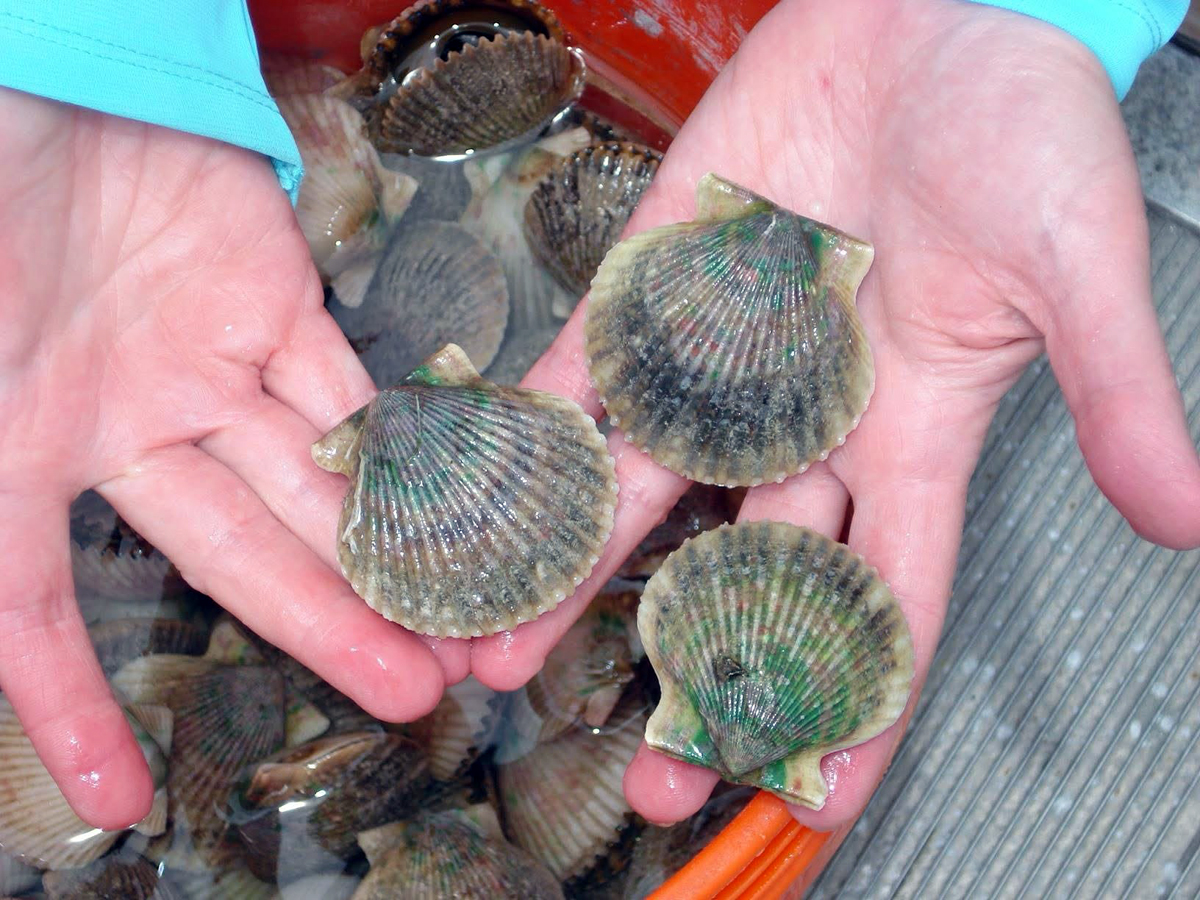
The difference between a good day on the water and a great one often comes down to knowing how to watch the water—and how to work as a team. Even if you’re booking a half-day scalloping charter and relying on a seasoned captain to find the grounds, there are a few things you can do to seriously boost your success.
Start by scouting from the boat. Once you’ve anchored, don’t just jump in blind. The clearer the saltwater, the more you can spot beds from above. Look for darker patches of grass—those are prime zones. Scallops tend to concentrate in edges where grass transitions into sand or rubble. Swim slowly and deliberately, keeping your head in the water as much as possible. Quick divers who cover ground erratically tend to miss more than they grab.
Work a grid. When you’re in the water, pretend like you’re mowing a lawn. Swim in one direction, then double back a few feet to your side. You don’t want to zigzag across someone else’s trail or skip over productive beds. If you’re in a group, fan out and cover parallel paths so you’re not all diving on the same scallop.
Take your time on each dive. Most scallops will let you get close before they start clapping their shells, but some will bolt a few feet if you’re careless. If the water’s a little murky, gently move aside the grass with your hand as you scan the bottom—scallops often bury themselves just enough to stay out of sight unless you’re being methodical.
And finally, communicate. If someone in your group finds a honey hole, rotate in. Don’t waste energy chasing single scallops if someone else is filling a bag right next to the boat. Efficiency wins, especially on a hot summer morning.
Scalloping Reports: What They Actually Tell You
You’ll see search terms like “Steinhatchee scallop report 2025” or “scalloping report 2025” all over the place in early summer, especially as people try to time their trips. But it’s worth being aware of what those reports really offer—and what they can’t guarantee.
- Most summer fishing reports are compiled from a mix of charter captain updates, FWC observations, and anecdotal feedback from recreational scallopers. Early-season reports might focus on density and size (Are they out there? Are they legal size yet?). Mid-season updates will start mentioning visibility, tides, and pressure. And by late August, you’ll hear more about how picked-over the beds are getting and whether it’s still worth going.
- For those scalloping out of the Econfina River, reports can be hit or miss. Because it’s a lower-traffic area, you’ll often see less chatter online about how it’s producing—which is exactly why it stays productive longer. Locals tend to keep their mouths shut once they find a hot bed, and captains are even tighter-lipped.
The best intel usually comes from recent trips with charter captains who are checking beds daily. That’s why going with a half-day guided trip is such a smart call if you’re unfamiliar with the local layout. You’re not just paying for the ride—you’re paying for yesterday’s intel, which can save you hours of swimming around blind.
Essential Gear: What to Bring, What to Skip
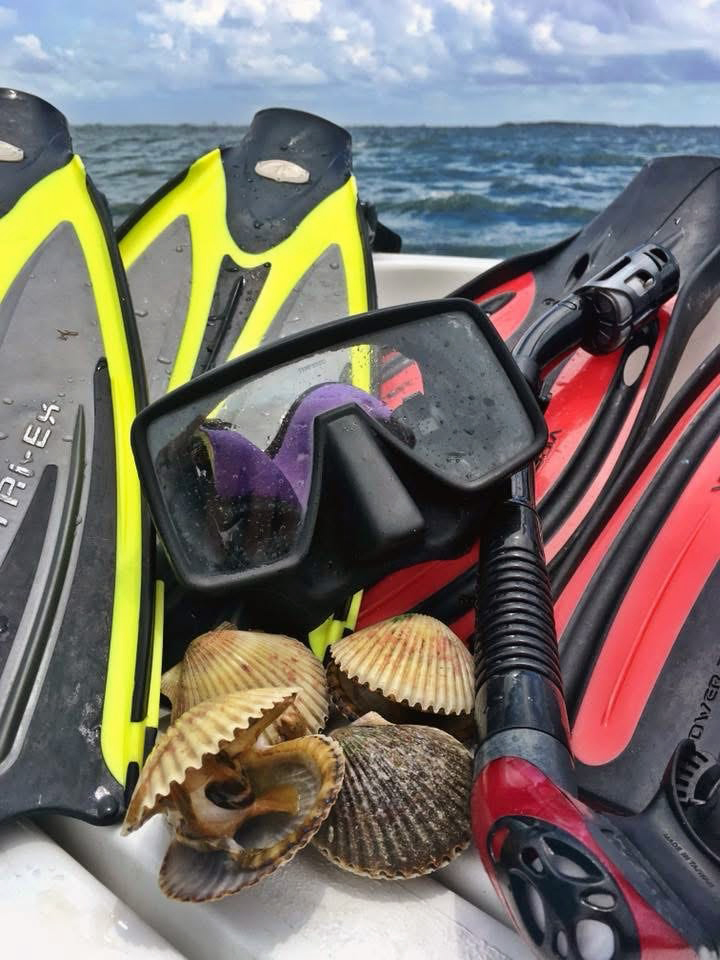
While most scalloping charters around Steinhatchee, Florida and the Econfina River will provide basic gear, it’s always better to know what works best—especially if you’re picky or want to maximize your comfort.
Start with a good quality mask and snorkel. Fogged-up lenses and leaky snorkels are deal-breakers when you’re trying to spot fast-moving scallops 5 feet down. Silicone skirts fit better than plastic, and dry-top snorkels are great if you’re a beginner.
Fins are optional but recommended. They let you dive easier and save energy swimming against current or tide. If you’re going without, just be ready to kick harder and stay close to the boat.
You’ll also want a mesh bag (usually clipped to a belt or float), gloves to protect your hands from shells and debris, and reef-safe sunscreen. A floating dive flag is required by Florida law and is typically handled by the captain, but make sure it’s visible and anchored properly when you’re in the water.
And don’t forget water, a towel, polarized sunglasses, and a dry bag to stash your phone, keys, and wallet. The less gear you bring, the better—but the right gear makes all the difference.
Half-Day Scalloping Trips
Here’s how a typical half-day charter on the Econfina might unfold:
You’ll meet your captain in the morning. That’s when the Gulf is calmest and visibility is best. After a short ride out of the river mouth, you cruise a few miles along the shallows, scanning the water and grass flats for signs of scallops.
Once the boat’s anchored, you’ll gear up and slide into the water. The hunt begins. Some groups hit their limit in 90 minutes. Others move around to a 2nd or 3rd spot if the first bed is thin. Either way, you’re usually back in the boat within a few hours, cleaned up, limit in hand, sun on your back, and the hard part behind you.
The beauty of a half-day trip is how it leaves your afternoon wide open. Whether you’re heading back to your cabin, cleaning your catch for dinner, or exploring the rest of the Big Bend, you’ll have that sun-soaked, post-saltwater feeling that only comes from a good morning in the Gulf.
Econfina River Area vs. Other Florida Scalloping Hotspots
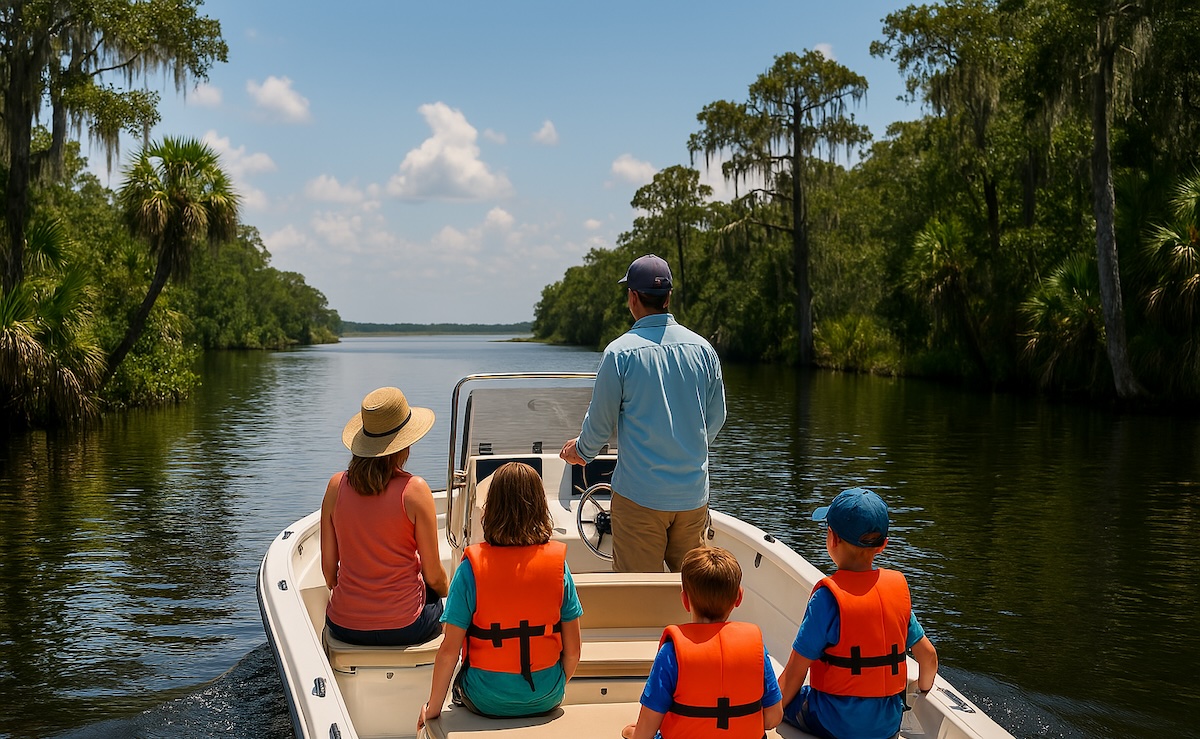
If you’ve scalloped out of places like Homosassa, Crystal River, or even Keaton Beach, you already know the general drill. What makes the Econfina River area so different is the balance of productivity and peace. You’re still in reach of the same Gulf scalloping zones, but you’re not competing with flotillas of rental pontoons and dozens of swimmers in every bed.
Crystal River is famous for its manatees and crowds. Homosassa is rowdy, loud, and fun—until you’re in a 30-boat gridlock waiting to hit the same patches of grass. Keaton Beach can be fine, but good luck finding a quiet stretch of bottom during peak season.
Econfina, on the other hand, flies under the radar. There’s no marina buzz, no bar scene waiting back at the dock. Just a low-key boat ride through wild marshlands, past birds and oyster bars, until you break into the Gulf where the real work starts. And that’s why it consistently produces—because it’s not being worked over by a thousand snorkels a day.
That said, it still shares the same regulations and water conditions as its louder neighbors. The tides, the seagrass beds, and the seasonal movements of scallops don’t care which town you’re launching from. So while you’re gaining quiet, you’re not sacrificing opportunity.
Why Tides (and Timing) Matter More Than You Think
It’s easy to assume scalloping is just: show up, swim, grab scallops. But those who do it every year—and fill their buckets faster—know how important tide cycles are.
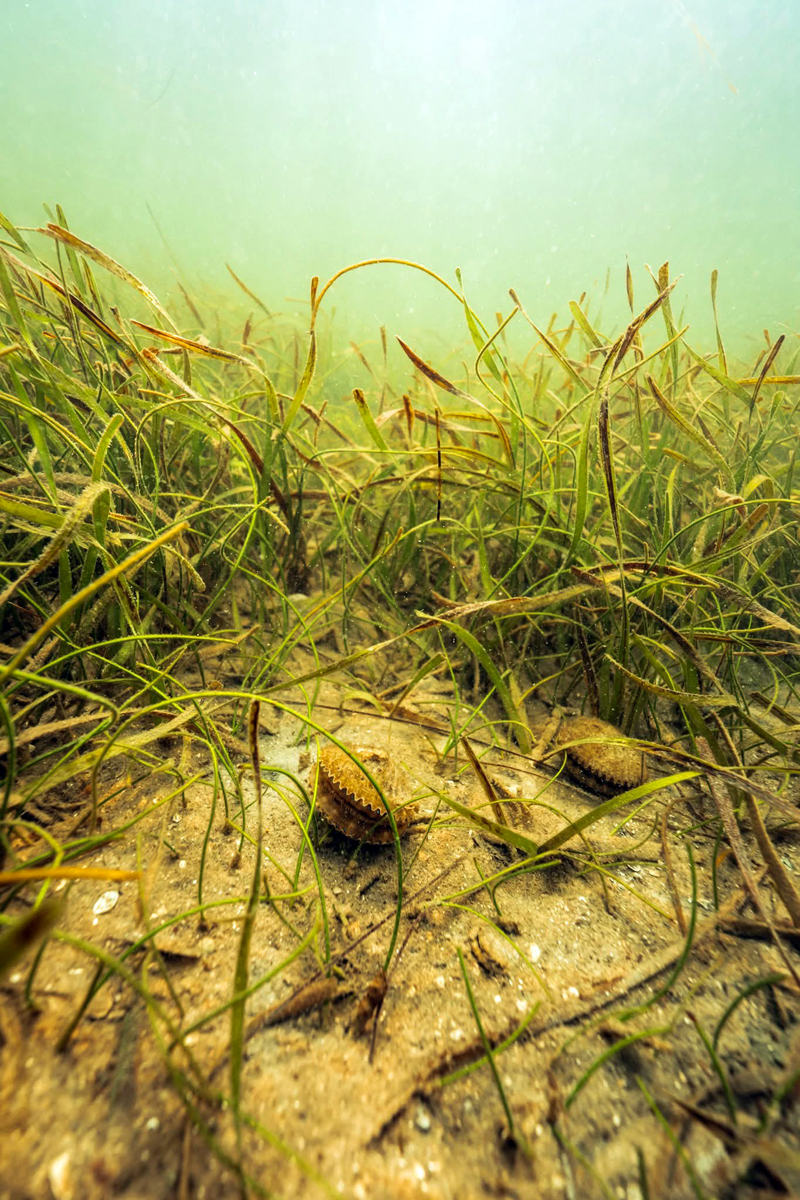
In the Big Bend, you’re dealing with shallow flats that change dramatically with each tidal swing. An outgoing tide can pull sediment and silt into the shallows, reducing visibility. An incoming tide often brings clearer water from deeper channels and can help you spot scallops easier, especially in those grassy-sandy transition zones they love.
Most half-day scalloping charters aim to take advantage of incoming tide windows, when conditions are at their best. But it’s not just about visibility. Scallops also tend to be more active—and easier to spot—when current is gently moving.
Timing matters, too. Early morning trips beat the heat, beat the crowds, and often give you the best look at untouched beds. Scalloping in the middle of the day means dealing with more churned-up water and competition. And by late afternoon, thunderstorms can roll in quickly, especially in July and August.
All of this adds up to one clear recommendation: if you’re planning a trip near Steinhatchee in 2025, especially in the Econfina River zone, book your scalloping adventure early in the day and try to go with the tide, not against it.
How Big Are the Scallops This Year?
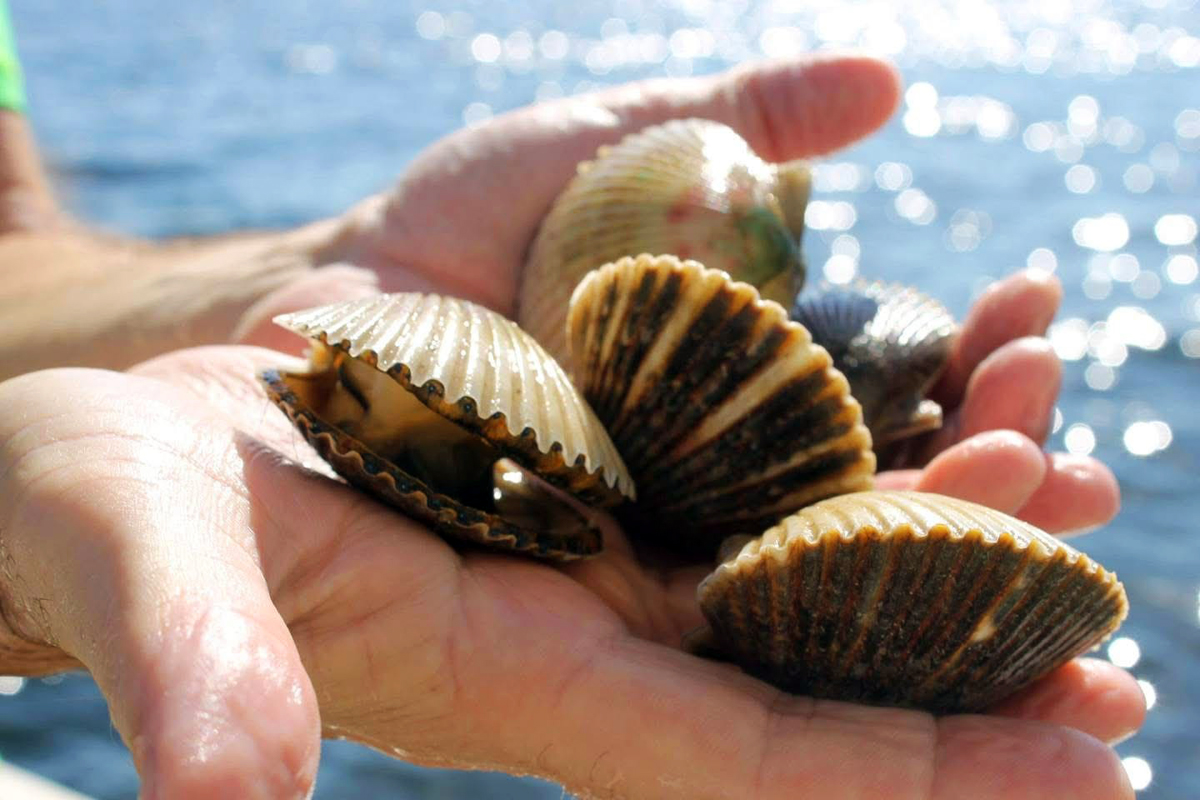
Each season varies, but one of the most common searches from June to late July is some variation of: Are the scallops big yet? or How big are the scallops this year?
Size fluctuates by location and time. Early in the season, you’ll find scallops that are just over legal size—plentiful, but small. By mid-July into August, those same scallops have grown significantly, and you’ll start pulling up some big, heavy shells full of meat. The later into the season you go, the fewer beds there are, but the size often improves.
The sweet spot? Usually mid-to-late July. You get better-developed scallops and still enough density to limit out without working too hard. Just keep in mind that scallops are filter feeders, and their growth is influenced by water quality, temperature, and grass bed health.
If you’re looking for the best combination of quantity and quality in 2025, tracking the scallop reports and waiting until the size is up—but not waiting too long—is the move.
Know the Limits
Florida has clear rules for scalloping. In the Steinhatchee and Econfina River region, the daily bag limit is usually 2 gallons of whole scallops per person, or 1 pint of meat. And there’s a maximum of 10 gallons whole or half a gallon meat per vessel, regardless of how many people you’ve got onboard.
If you’re scalloping with a group of 4 and you each collect your limit fast, there’s no reason to keep hunting. Instead, clean your haul, enjoy the moment, and maybe take a slow ride back through the marshes and creeks.
Also, it’s worth clarifying that these limits aren’t simply “suggestions”—they’re enforced. Florida wildlife officers do patrol, even in remote spots like the Econfina zone, so respecting bag limits keeps the season open and sustainable for everyone.
Cleaning, Storing, and Enjoying Your Scallops
You’ve snorkeled your heart out on a half-day charter trip, filled your bag, and made it back to the dock with a boatload of Gulf treasures. Now comes the part that’s either oddly satisfying, or something you pawn off on the one friend who doesn’t mind a little grit under their nails—cleaning your scallops.
The basics you’ll need:
- A shucking knife or spoon
- A small bucket or bowl
- trash bin for the shells
- Hold the scallop flat-side up, insert the knife just inside the opening.
- Scrape along the top shell to pop it open.
- Once open, slide the blade underneath the round white muscle and lift it free, leaving the gunk behind. It takes practice to get fast at this, but most folks get the hang of it after a dozen or so and get to be much faster at it than they started out.
- Rinse your meat with cold freshwater, store it on ice (not submerged in water), and plan to cook or freeze it within 24 hours for the best flavor.
The best scalloping charters in the Econfina area will offer to clean your catch for a fee or at least show you how it’s done. If not, some public cleaning stations near the ramp or at your rental spot make it easier.
These scallops aren’t the huge deepwater ones you’ll find at a restaurant—they’re bay scallops, smaller and sweeter, perfect for a light sauté, ceviche, or even skewered and grilled. And there’s nothing quite like eating something you spent the morning diving for, especially when it came straight from the clear seagrass beds of the Big Bend.
Turning a Half-Day Trip into a Full Experience
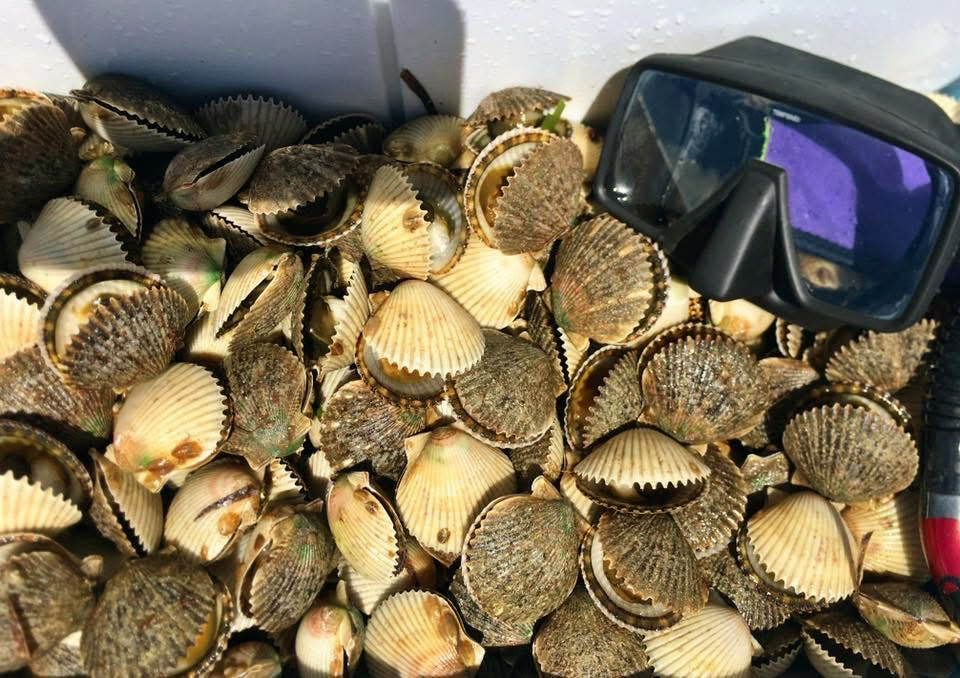
One of the best things about booking a half-day scalloping charter is that you’re back on land by early afternoon—meaning you’ve got time to explore everything else this coast has to offer.
The Econfina River isn’t lined with resorts or gift shops, and that’s a good thing. What it is surrounded by is old-growth marshland, shady oak hammocks, freshwater springs, and tidal creeks perfect for kayaking or just drifting with the current. You can turn your morning on the Gulf into an afternoon inland, chasing redfish on foot in backwater cuts or floating in a quiet spring-fed swimming hole.
Even if you’re just there for the day, bring a cooler with lunch, a hammock, and maybe a speaker. Scalloping may be the star of the trip, but the setting deserves a few hours of its own.
And if you’re staying the weekend, consider planning your trip around the tides so you can squeeze in two short trips instead of one long, hot day on the water. It’s less tiring, easier on the kids, and gives you more flexibility to explore the Big Bend’s wilder corners at your own pace.
Safety, Etiquette, and Not Being That Boat
Out on the flats, scalloping feels easy—but there are still a few safety must-knows to keep your trip fun instead of frustrating.
- Stay close to your boat and within easy swimming range of the dive flag. Florida law requires a clearly visible red-and-white flag whenever anyone is in the water, and it’s not optional. Other boats are required to stay 300 feet away from a flag in open water, but that only works if they can see it.
- Be smart with hydration. It’s easy to forget how hot the Gulf sun gets when you’re swimming, but scalloping is physical, and you’ll sweat more than you realize. Drink plenty of water before, during, and after your trip.
- Etiquette. Don’t crowd other boats. If someone’s already anchored on a bed, move on. Scallop pressure is real, and nobody wants to be surrounded by snorkels chasing the same few critters. Be polite, respect space, and remember that everyone out there is chasing the same experience.
And last, keep the river wild. That means no trash, no dropped bags, and no broken beer bottles left in the grass. This part of the coast is special because it’s quiet and clean. It stays that way because people take care of it.
Scalloping Trips
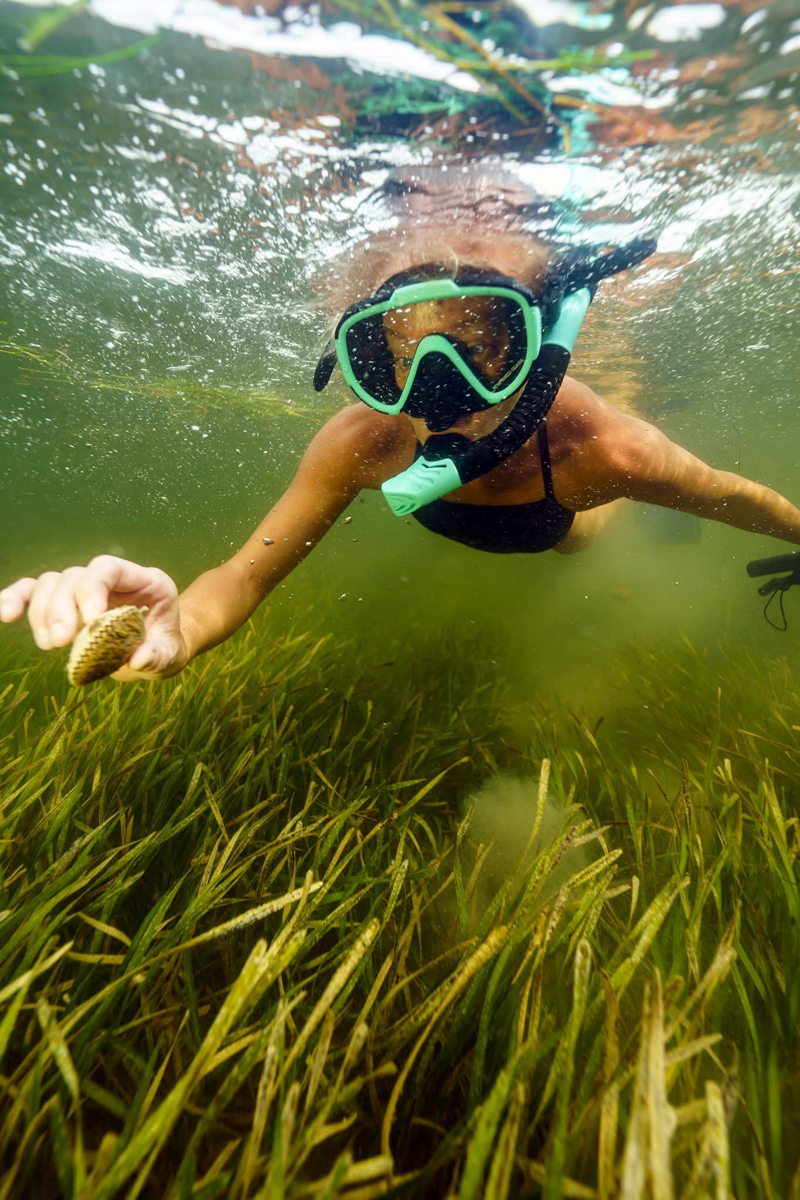
If you’re planning to go scalloping near Steinhatchee in 2025, especially in the lesser-known but incredibly rewarding waters off the Econfina River, now’s the time to start thinking tides, timing, and how to do it right. Skip the full-day slog, skip the crowded boat ramps, and instead look at half-day scalloping charters as your ticket to richer, more personal Big Bend scalloping adventures.
Scalloping isn’t just a summer activity—it’s a ritual. And out here, in this quieter part of the coast, it still feels like one.
Ready to Find, Float, and Feast?
Scalloping in the Steinhatchee and Econfina area is about more than just filling a bag with shells—it’s a treasure hunt in shallow water that’s great, relaxing fun for the entire family. With shallow grass flats, easy access, and cold drinks waiting back on the boat, it’s the kind of trip you’ll talk about long after summer’s over.
Book a half-day scalloping charter and hit the Gulf at the right tide, with the right gear, and local know-how on your side. We’ll supply the licenses, the mesh bags, the masks—and even a cooler full of water. Want to clean your catch riverside, have it prepped by a local chef, or pair your trip with a spring-fed swim? You bring the crew and the appetite.
Scalloping season runs from mid-June to early September, with peak conditions in July and early August. Don’t wait for the beds to get picked over—book your charter today and let’s go scalloping!

